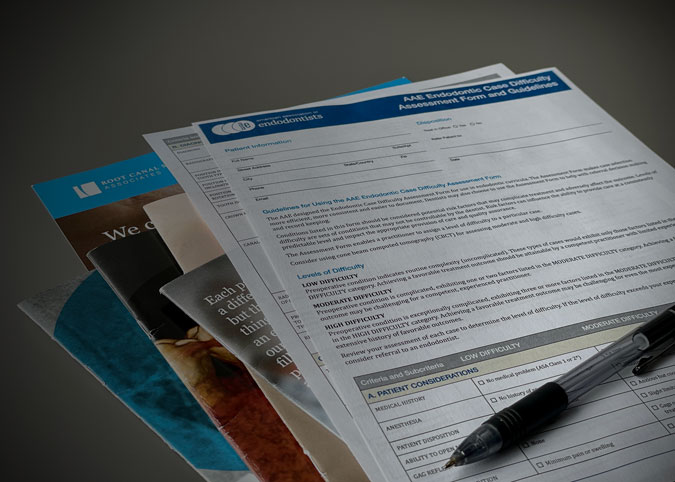Now Available
Guidelines from The American Association of Endodontists (AAE) enable you to assign a level of difficulty to your cases, making it easier to decide whether a referral is the best choice. The AAE has recently updated those guidelines.
Summary of Key Changes
- "Consider using cone beam computed tomography (CBCT) for assessing moderate and high difficulty cases" was added in the guidelines for usage section.
- The term “Minimal Difficulty” was analyzed, since the descriptors for minimal do not seem to describe anything out of the ordinary of a routine case. After some discussion on alternate names, "Low Difficulty” was chosen, and we thus renamed this particular level of difficulty on the form.
- Achieving a predictable treatment outcome will be challenging for even the most experienced practitioner with an extensive history of favorable outcomes.
- Position in the Arch, Tooth Type was added as a criterion with first row definitions. Position in the Arch, Inclination was added with second-row definitions. Position in the Arch, Rotation was added with third-row criteria.
- Apex Diameter was added as a separate row using closed apex for minimal, semi-closed apex (1-1.5mm) for moderate, and >1.5mm for high.
- “And chamber” was added after "canal(s)" in the Low and High Difficulty columns of Radiographic Appearance of Canal(s).
- “No history of trauma” was added in the Low Difficulty column of Trauma History.
- "Other anomalies such as radix ento/para molaris" was added in High Difficulty under Canal Morphology.
- A new category was added to the row above “Resorption”, that details the proximity of the root apices to vital structures such as the IAN or mental foramen. Thus, for Low Difficulty, this measurement reads as >5mm from apices; for Moderate Difficulty: 3-5mm; and for High Difficulty: <3mm.
- “ASA V” was removed as a treatment consideration under Medical History, High Difficulty.
